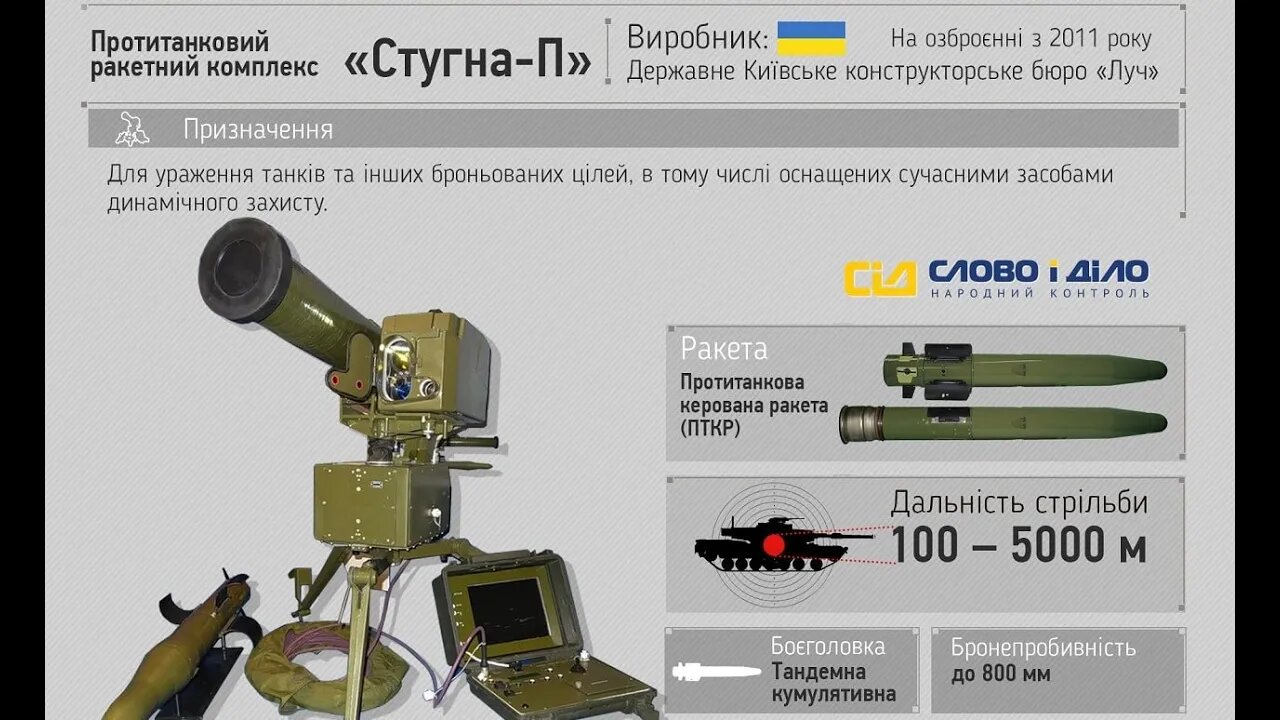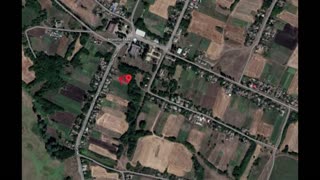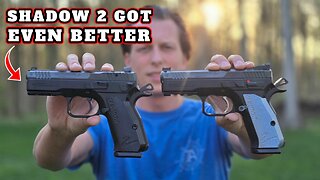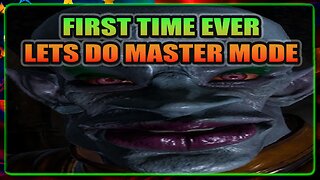Premium Only Content

Ukraine's Stugna-P Missile - How Does it Work?
Ukraine's Stugna-P anti-tank guided missile has seen a lot of success in the Ukraine War. But how does it work?
Stugna-P entered service in 2011. It is an anti-tank guided missile designed to destroy modern armored targets, either stationary or moving. It is quite variable—able to hit from up to 5km to as short as 100m. At night, the max range is shortened to 3km.
It is unusual in design compared to anti-tank weapons such as the Javelin and the NLAW which we have seen in action as the system consists of a tripod launcher and a laptop-like control panel with a joystick and display. This is connected to the firing unit by a cable.
Looking at the launcher system—the Stugna-P uses a laser guidance system—the PN-I which can be used during day and night. This PN-I features a television surveillance and sighting system, a laser range finder, a laser guidance system and a control system for the axes of the missile.
While this may seem clunkier and less portable than, say, the NLAW shoulder-launched system, it has one key advantage—the crew can fire it from up to 50 meters away from the launcher.
This allows the tripod launcher to be set up in an ambush position and an attack launched without the operators exposing themselves to danger. This tactic is used quite often—in a New York times article, a Stugna-P operator waited for three days for a shot at a Russian convoy, setting up an ambush position on a stretch of road. It can also be used as a a static defensive position to grind an attack to a halt rather than ambush.
The standard unit needs to manually steered, but the pricier systems are fire and forget. Now, while on the surface, fire and forget seems the best option, manually steered does allow for rapid changes—possible reasons could be instead guiding it onto a second, nearby target or, diverting the attack altogether, such as if there are friendlies or civilians nearby. At its max range, the fight time is 20 seconds, which is a long time on a battlefield. Plenty can happen, so guiding the missile to its target and allowing changes does have an advantage over fire and forget.
Another advantage is the cost. Stugna-P costs just $20,000 for a unit. Javelin can cost three times as much as Stugna-P. So Ukraine can churn out more Stugna-P units for the fraction of a cost. NLAW units cost around $40,000, so again, a pricier bit of kit than the Stugna.
It’s range is also an advantage over other systems. As mentioned, it can hit from 100m to 5km. The NLAW has an effective range of 20 meters to 800 meters—or 0.8 km. The Javelin up to 2.5 km.
An unexpected advantage of Stugna-P is the viewing monitor and live feed. Why? Because it allows soldiers to easily record their kills. We have plenty of videos of Stugna-P strikes. This is important as it is effective propaganda. Showing video footage of kills—sharing them online not only shows the world that you’re winning. It demoralizes the enemy—if they see it. It makes them fearful. Then, of course, with the world seeing how effective the weapon is, it brings in new orders. We saw all of this with Azerbaijan and the footage of Bayraktar strikes.
Disadvantages. It is bigger, heavier and less portable. The Stugna-P weighs 214 lbs compared to 49 lbs for the Javelin and 27 lbs for the NLAW. So it needs a larger vehicle to transport around than the Javelin and NLAW—which we have seen been transported on electric bikes. It also requires a 3-person team to operate, whereas the Javelin and NLAW can be used by a single operator.
Another disadvantage is it takes longer to unpack and set up. NLAW can be raised, sighted, aimed and fired in just 6 seconds. Stugna-P needs unpacking, mounting and connecting to its guidance system.
It is also an open-country weapon. Given its minimum range of 100m, it isn’t really suitable for urban conflict where enemy vehicles will likely be in close proximity. The NLAW, by comparison, is effective from just 20 meters, making it perfect for urban warfare.
Because of its size, weight, the three-person team and long minimum range. The Stugna-P is a more suitable to specialized, planned ambushes than opportunistic strikes. Setting a Stugna-P system along a supply route or as a defensive measure to protect a specific location are the best uses of the weapon, whereas the Javelin and NLAW given their smaller size and ease of use can be more varied in use.
So, why is the Stugna-P such an effective tank killer? It can be programmed to dive down from 10 meters towards the thinner, top armor of a tank. In much the same way as the Javelin, though at a shallowed angle than the javeline missile.
Then there is the warhead. The standard RK-2S missile has a 22-pound tandem charge warhead which is designed to preemptively trip the bricks of the explosive reactive armour used on Russian tanks. This warhead can penetrate 800 millimeters behind the tanks reactive armor.
-
 2:11
2:11
Suchomimus
2 years agoBM-21 Grad Destroyed
6343 -
 53:29
53:29
Professor Nez
2 hours ago🚨🇺🇸 President Trump MAKES HISTORY! The REAL Story of His First 100 Days!
6.71K27 -
 17:01
17:01
DeVory Darkins
19 hours ago $25.79 earnedDemocrats HUMILIATE AOC as Trump drops bombshell order
27.5K108 -
 15:05
15:05
Stephen Gardner
22 hours ago🔥BREAKING: Trump HAMMERS Zelensky after Kicking France's Macron from meeting about Ukraine!
59.5K261 -
 6:11:56
6:11:56
SilverFox
18 hours ago🔴LIVE - ELDEN RING - LEVEL 300 CHALLENGE
18.9K1 -
 9:20
9:20
Tactical Advisor
23 hours agoNew Shadow 2 Carry | CZ Compact Upgrade (FIRST LOOK)
54K18 -
 7:55
7:55
Talk Nerdy Sports - The Ultimate Sports Betting Podcast
5 hours ago4/27/25 - Sunday Service: Vasil’s 10 Holy Locks & PrizePicks Resurrection 💥🧠
30.4K2 -
 3:27:54
3:27:54
Pepkilla
5 hours agoSundayzZzZzZz Wins?
20.1K3 -
 LIVE
LIVE
Mossy
4 hours ago🍃PRE HALO PARTY🍃OBLIVION HARDEST DIFFICULTY🍃COME CHILL🍃420 SESH🍃GAMING🍃REACTIONS🍃MORE????🍃
140 watching -
 18:15
18:15
World2Briggs
13 hours ago $16.48 earned10 Cities That Are Slowly Emptying Like a Sad Party
54.1K42